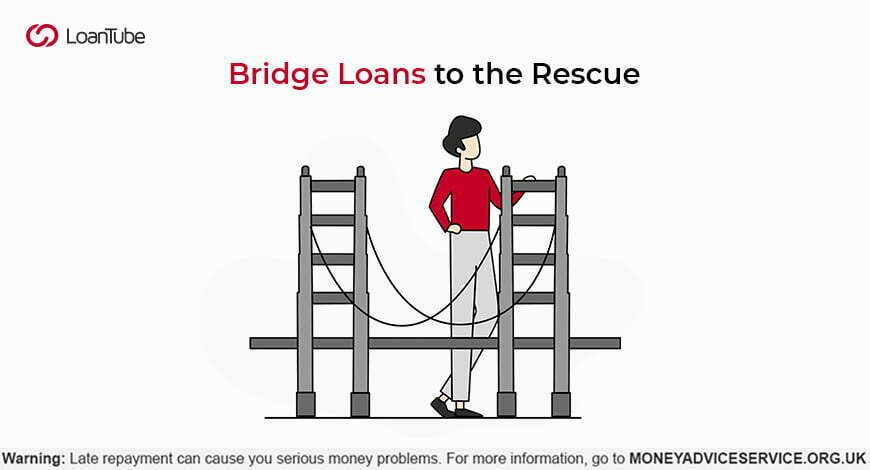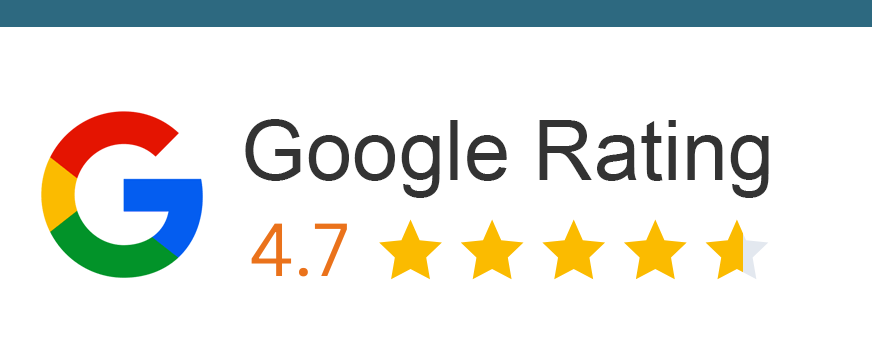A bridging loan, as the name suggests, can help you ride over some financial gaps. Bridging loans could help you invest in a new home while you await the sale of your existing property. But their utility isn’t limited to real-estate. Learn 6 smart ways to use bridging loans to your rescue.
Bridging loans are a strategically designed financial product to help you bridge either personal or commercial short-term financial gaps. These loans give you faster access to money while you await funds from selling a former property or completing a project. With their flexible terms and swifter application process, bridging loans have become a popular product in real estate. But their utilization isn’t limited to just one industry.
Read on to find out six ways in which you can use a bridging loan to keep your head above the water.
Maximise your options: Compare and apply for loans below with LoanTube
Apply Filters

Loan Amount
£4000 -
£20000
Norwich Trust
Loan Term
1 -
10 years
4.8/5
Representative APR
31.90%
Minimum Age
21 Years
Representative Example: £12,000 over 66 months, 31.9% APR fixed. Monthly payment £358.22 Annual interest rate 28.01% fixed. Interest payable £11,642.52. Total repayable £23,642.52.

4.8/5
Norwich Trust
Loan Amount
£4000 -
£20000
Loan Term
1 -
10 years
Representative APR
31.90%
Minimum Age
21 Years
Minimum Income
£2000 per month
Representative Example: £12,000 over 66 months, 31.9% APR fixed. Monthly payment £358.22 Annual interest rate 28.01% fixed. Interest payable £11,642.52. Total repayable £23,642.52.

Loan Amount
£5000 -
£100000
Evolution Money Loans
Loan Term
1 -
20 years
4.5/5
Representative APR
28.96%
Minimum Age
18 years
Representative Example: Loan Amount: £20950.00, Loan Term: 85 Months, Interest Rate: 23.00% PA Variable. Monthly Repayments: £537.44. Total Amount Repayable: £45,682.15. This example includes a Product Fee of £2,095.00 (10% of the loan amount) and a Lending Fee of £714.00

4.5/5
Evolution Money Loans
Loan Amount
£5000 -
£100000
Loan Term
1 -
20 years
Representative APR
28.96%
Minimum Age
18 years
Minimum Income
Not mentioned
Representative Example: Loan Amount: £20950.00, Loan Term: 85 Months, Interest Rate: 23.00% PA Variable. Monthly Repayments: £537.44. Total Amount Repayable: £45,682.15. This example includes a Product Fee of £2,095.00 (10% of the loan amount) and a Lending Fee of £714.00

Loan Amount
£1000 -
£10000
1Plus1 Guarantor Loans
Loan Term
1 -
5 years
4.4/5
Representative APR
39.90%
Minimum Age
18 years
Representative Example: Borrowing £3000 over 36 months with a representative APR of 39.9% (variable),the amount payable would be £134.21 a month,with a total cost of credit of £1831.56 and a total amount payable of £4831.56.

4.4/5
1Plus1 Guarantor Loans
Loan Amount
£1000 -
£10000
Loan Term
1 -
5 years
Representative APR
39.90%
Minimum Age
18 years
Minimum Income
Not mentioned
Representative Example: Borrowing £3000 over 36 months with a representative APR of 39.9% (variable),the amount payable would be £134.21 a month,with a total cost of credit of £1831.56 and a total amount payable of £4831.56.
What are bridging loans?
- Bridging loans are a form of secured short-term finance that can help you cater to urgent expenses until you secure permanent funding. For instance, you could use a bridging loan to pay and upfront deposit for your new home, before selling your current home. You could even use it to pay deposits at an auction and secure a home before selling your old home. The idea is to help you bridge the gap that may be holding you back.
- The term for bridging loans can range between 3 to 18 months, with comparably high-interest rates. Additionally, a bridge loan requires collateral security. So you will need to own an asset, such as property or land, to secure a bridging loan.
- The most common use of a bridge loan is in the real estate market. People who are awaiting a property sale can use a bridge loan to buy a new one. Real-estate developers can also use bridge loans at auctions to cover the deposit cost needed to secure the property.
How much can I borrow with a bridging loan?
The amount you can borrow with a bridging loan primarily depends on your credit rating, the new property’s value, and the property against which you borrow. If you happen to have a below-average credit rating, you may not qualify for the best interest rates on the table. And, high-interest rates can increase the effective cost of your loan. So choose your offer wisely.
6 ways to use bridging loans
Bridging loans can be used to solve a multitude of purposes, which include but aren’t limited to the following:
- Buying a property: The lack of funds can hold you back from securing a firecracker deal in the property market, particularly if you haven’t sold your current home. Perhaps your buyer bailed on you at the last minute, but you don’t want to break the property chain. Bridging loans could help you secure a property while you await the sale of your old home. You’ll have ample time to sell your home, even if it wasn’t previously on the market. You may be able to secure a substantial amount with a good credit score and decent property value.
- Down paying at an auction: Bridging loans are a great way to secure a property through an auction. Once you win the bid, you only get 28 days to complete your purchase. Getting a mortgage approval in such a short span may not be easy. Bridging loans are known to have a faster processing time. Once you receive the proceeds, you can either buy the property or hand out a down payment towards the property.
- Buy-to-let investments: When you usually find an investment-worthy property, you apply for a mortgage to purchase it. However, some properties may be deemed ‘umortgageable’ by banks or building societies. It merely means that these properties are inappropriate for mortgage lending. There are several reasons why this could be the case, but the most common cause is the lack of functional amenities – bathroom or kitchen. Another reason could be that the property is situated above another commercial property or the lease is too short. Since a mortgage won’t be available for such a property, buyers with adequate cash can purchase it. A bridging loan could help you capitalize on this investment opportunity, plus, help you fund amendments to the house to make it functional and ‘mortgageable’. You can repay the bridge loan through remortgaging the property.
- Business ventures: A business isn’t just about one revolutionary idea. It’s also about the execution of the concept and the ability to sustain during a rough patch. Setting up a business requires you to have abundant capital for large investments. You may need resources such as machinery, IT equipment, tools or inventory depending on the service you provide. If you don’t have enough cash flow, it may cause delays in purchasing these resources. Bridging loans can help you regulate your cash flow and offer some respite until you receive funds.
- Inheritance tax and probate: Dealing with inheritance tax and probate issues isn’t a cinch, and you require large funds to tackle such situations. Taxes include releasing charges on a property, paying off beneficiaries or settling other bills. In such cases, the owner usually sells the property to procure funds. Property auctions can be time-bound, so you may not get the best price. You can use a bridging loan to cover the costs, which may even buy you some time. Although, you must own the property to be secured against the bridging loan. You can then repay the loan with the proceeds from the property’s sale.
- Prevent foreclosure: Secured debt can have severe repercussions if you fail to keep up with repayments. The lender can repossess the property secured against the loan and sell it recuperate their loss. If your property is due for foreclosure, a bridging loan could help you settle the debts taken against it. The one precondition is that you must have enough equity either in this or any other property to secure the bridging loan. You’ll have more control over the situation and be able to avoid a forced sale and sell the property to its full value.
How to choose a suitable bridging loan?
Before you start comparing bridging loans to find yourself the most suitable offer, here’s some food for your thoughts. These thought-provoking questions could help you find the offer that best fits your requirements:
- Work out a loan amount: Carefully assess your finances to figure out the amount of money you need. Bridging finance can yield you a sizeable amount of money, but you should only borrow what you need.
- Evaluate your property: Check your property’s market value. It affects the loan amount and interest rates that the lender offers.
- Figure out a loan term: Bridging loans can be both a long and short-term credit option, depending on your financial needs. Choose a reasonable and affordable loan term.
- Check your mortgage: Whether or not you have a mortgage on your property impacts how much you can borrow through bridge loans.


